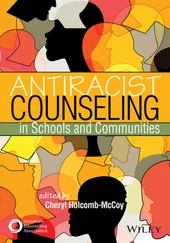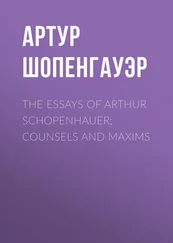Counseling and Psychotherapy
Здесь есть возможность читать онлайн «Counseling and Psychotherapy» — ознакомительный отрывок электронной книги совершенно бесплатно, а после прочтения отрывка купить полную версию. В некоторых случаях можно слушать аудио, скачать через торрент в формате fb2 и присутствует краткое содержание. Жанр: unrecognised, на английском языке. Описание произведения, (предисловие) а так же отзывы посетителей доступны на портале библиотеки ЛибКат.
- Название:Counseling and Psychotherapy
- Автор:
- Жанр:
- Год:неизвестен
- ISBN:нет данных
- Рейтинг книги:4 / 5. Голосов: 1
-
Избранное:Добавить в избранное
- Отзывы:
-
Ваша оценка:
- 80
- 1
- 2
- 3
- 4
- 5
Counseling and Psychotherapy: краткое содержание, описание и аннотация
Предлагаем к чтению аннотацию, описание, краткое содержание или предисловие (зависит от того, что написал сам автор книги «Counseling and Psychotherapy»). Если вы не нашли необходимую информацию о книге — напишите в комментариях, мы постараемся отыскать её.
Counseling and Psychotherapy — читать онлайн ознакомительный отрывок
Ниже представлен текст книги, разбитый по страницам. Система сохранения места последней прочитанной страницы, позволяет с удобством читать онлайн бесплатно книгу «Counseling and Psychotherapy», без необходимости каждый раз заново искать на чём Вы остановились. Поставьте закладку, и сможете в любой момент перейти на страницу, на которой закончили чтение.
Интервал:
Закладка:
The strategies we have outlined in this section enable a counselor or therapist to achieve more effectively both the process and the outcome goals related to counseling or therapy. Choosing which strategy to use, when to use it, and what its impact will be in the helping relationship is based on the education, experience, and personal dynamics that a counselor or therapist brings to the helping relationship (see Sidebar 1.5).
MOVING TOWARD AN INTEGRATIVE APPROACH TO COUNSELING AND PSYCHOTHERAPY
Even though this book aims to introduce the reader to various theories of counseling and psychotherapy, it is important to realize that few counselors are purists in their practice. In other words, only a small percentage of practitioners (5% or fewer) describe themselves as maintaining allegiance to only one theoretical set to guide their work with clients (McClure et al., 2005; Norcross & Beutler, 2011). In the past, many counselors described themselves as eclectic, but the term integration is currently being used in the profession because it is a more accurate description of correct practices. In a short history of eclecticism in counseling and psychotherapy, Lazarus (2005) explained that eclecticism has been supplanted by integrationism because of the negative connotation ascribed to the term eclectic , because some counselors who called themselves eclectic never developed a theoretical underpinning or rationale for the use of techniques borrowed somewhat haphazardly from various theories. In comparison, integration suggests a merging that may be more reflective of what is happening with the skilled practitioner. Norcross and Beutler (2011) described the four most common types of integration of theories of counseling and psychotherapy: technical integration, theoretical integration, assimilative integration, and common factors integration.
Sidebar 1.5 Strategy Challenges
This section of the chapter described three sets of strategies (for building rapport, for aiding in data gathering, and for adding depth and enhancement to the relationship). Which of the three sets did you find the most challenging as you read the descriptions and examples? What were the reasons you found them challenging? What could you do to meet the challenges you think those skill sets present?
Technical integration is focused on selecting the best treatment option for the individual and the diagnosis and is, as far as possible, evidence based. This type of integrationism uses techniques connected with various theories rather than techniques connected with a single theory or conceptual frame of reference. Arnold Lazarus was one of the pioneers of technical integration, and he called his approach multimodal behavior therapy (Lazarus, 1997). Several resources available to practitioners connect diagnoses and treatment plans based on what the research shows to be the most efficacious. Barlow et al.’s (2011) The Unified Protocol for Transdiagnostic Treatment of Emotional Disorders: Therapist Guide is an excellent example of this type of integration.
Theoretical integration is based on the idea of blending the best components of two or more theories and assuming that the outcomes of counseling or psychotherapy will be better than the result of using either theory by itself. Assimilative integration is focused on a single theoretical orientation but incorporates, on a very selective basis, techniques from other therapeutic paradigms. The advantage of working this way is that the counselor bases the case conceptualization and accompanying treatment plan on a single theory. Finally, common factors integration emphasizes common practices connected with a variety of theories of counseling and psychotherapy. Many of the core dimensions of the helping relationship discussed in this chapter (e.g., empathic understanding, stages, strategies, brief approaches) and common to many theoretical practice sets are drawn on by counselors who see themselves as adhering to a common factors integrative philosophy of counseling.
We wish to emphasize that it takes considerable time as well as years of supervised practice to become familiar with the myriad theories that could be used to guide the process of counseling and psychotherapy. We are not suggesting that by the time they finish this book, readers will be able to move toward an integrative approach, but we want them to be thinking about this as they read and study each of the chapters in this book
MULTICULTURAL AND SOCIAL/CULTURAL ORIENTATIONS
Other factors that affect the helping relationship and the understanding and use of theory are counselor cultural competence, cultural humility, and social justice imperatives. The Multicultural and Social Justice Cultural Competencies (MSJCC; Ratts et al., 2015) improved on the previously crafted Multicultural Counseling Competencies (Sue et al., 1992) and provided a foreground for this work within the counseling field, particularly with regard to counselor identity and the helping relationship (Ratts et al., 2016). The MSJCC outline the important role of counselor self-awareness in providing culturally competent counseling (Davis et al., 2018). Awareness of one’s own cultural diversity and how this directly impacts the therapeutic relationship is one aspect of this multicultural model that is often highlighted in research. Additionally, and perhaps fundamental to this process, is also counselor self-awareness of social location and cultural beliefs. Social location is the manifestation of the complex fabric of cultural identity, roles, lived experiences, internal and external forces, and so forth. Counselors account for the nuances of lived experience that a person has that cannot be replicated or fit a prototype. An awareness of diversity addresses the counselor’s or therapist’s openness and motivation to understand more about their own cultures and cultural intersectionalities as well as the cultural intersectionalities that clients bring to the helping relationship (Brinkman & Donohue, 2020). In addition to self-awareness, the MSJCC require evaluation of knowledge and skill regarding cultural competencies, which encourages counselors to engage in a continuous practice of self-assessment (Ratts et al., 2016).
The continuum of cultural competency remains central to the discussion of diversity and inclusion within counseling theory and practice. The American Counseling Association (ACA) has reinforced cultural competence by including, among others, the following competencies needed for counseling diverse groups on its website ( www.counseling.org/knowledge-center/competencies):
ACA Advocacy Competencies (March 2003)
ALGBTIC Competencies for Counseling LGBQIQA (June 2012)
ALGBTIC Competencies for Counseling Transgender Clients (September 2009)
Competencies for Addressing Spiritual and Religious Issues in Counseling (May 2009)
Competencies for Counseling the Multiracial Population (March 2015)
Multicultural and Social Justice Counseling Competencies (July 2015)
Multicultural Career Counseling Competencies (August 2009)
Cultural Humility Along With Cultural Competence
Cultural competency provides a baseline for developing awareness, skills, and knowledge necessary for counseling diverse clients. However, without moving toward or embodying cultural humility in relationships, counselors run the risk of becoming overconfident in knowledge and inadvertently relating to clients in rigid, monolithic ways. Cultural humility is “the ability to maintain an interpersonal stance that is other-oriented (or open to the other) with an aspect of cultural identity that is most important to the client” (Hook et al., 2017, p. 354). Having cultural humility means the counselor engages in a continuous process of learning in and out of session. Multicultural orientations require counselors and therapists to commit to a continuous process of developing cultural competency and cultural humility and then implementing these efforts into practice (Gundel et al., 2020). In addition to competence and humility, acting from a culturally responsive place must also be intentional. Simply put, without intentional effort of action and interaction, the other training falls short. As a counselor, this means actions on various levels, such as the personal, interpersonal, community, institutional, public policy, and international/global levels (Singh, Appling, & Trepal, 2020). It also relates to the counselors’ responsibility to change their way of working within the field of counseling, for example, in the counseling clinic, in the university, in ethical standards, in accreditation by the Council for Accreditation of Counseling and Related Educational Programs, and in counselor education.
Читать дальшеИнтервал:
Закладка:
Похожие книги на «Counseling and Psychotherapy»
Представляем Вашему вниманию похожие книги на «Counseling and Psychotherapy» списком для выбора. Мы отобрали схожую по названию и смыслу литературу в надежде предоставить читателям больше вариантов отыскать новые, интересные, ещё непрочитанные произведения.
Обсуждение, отзывы о книге «Counseling and Psychotherapy» и просто собственные мнения читателей. Оставьте ваши комментарии, напишите, что Вы думаете о произведении, его смысле или главных героях. Укажите что конкретно понравилось, а что нет, и почему Вы так считаете.












